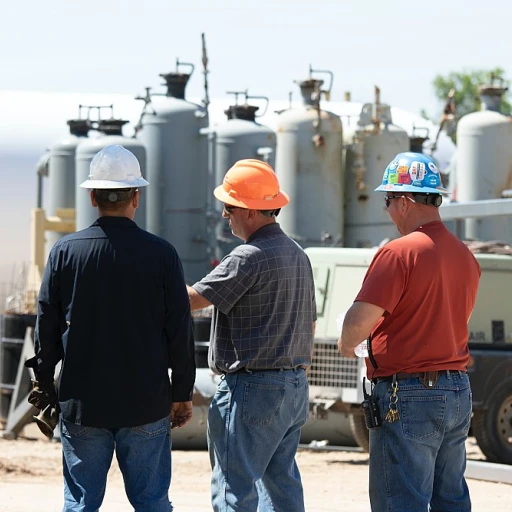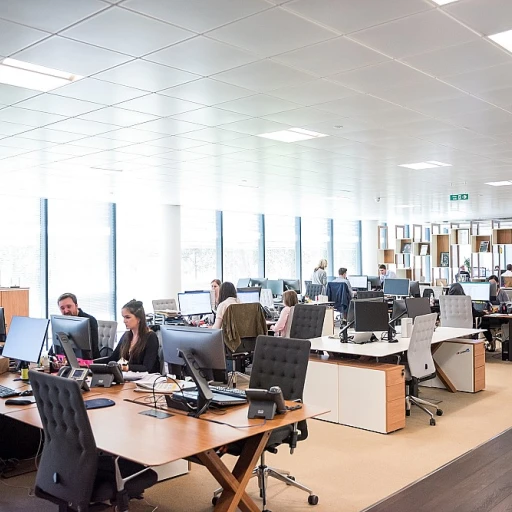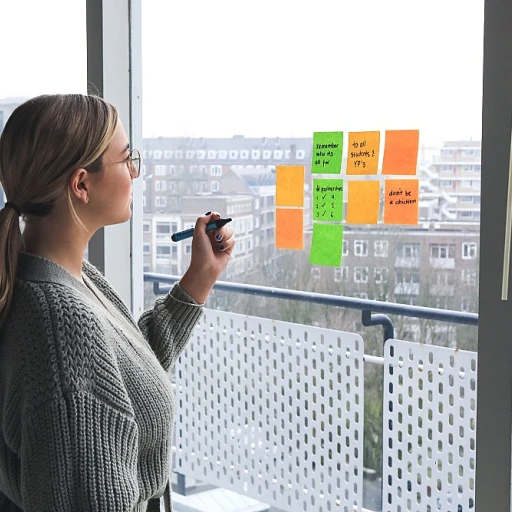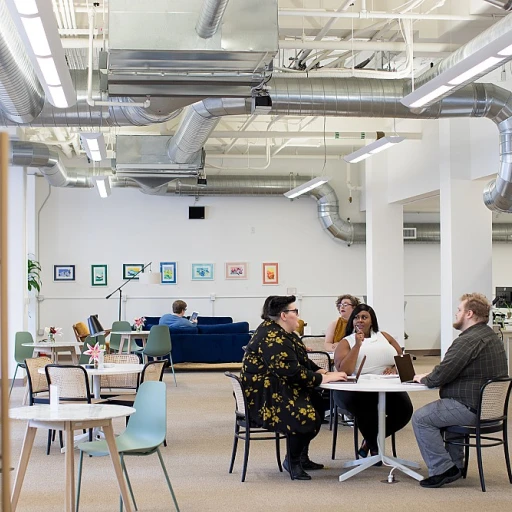
The Evolution of Employee Engagement
The Shift in Employee-Centric Practices
The landscape of employee engagement has undergone a significant transformation, as organizations recognize the importance of enhancing workplace experience for all employees. This evolution has seen companies striving to create environments where people genuinely feel valued and connected. Traditional office setups are being replaced by spaces that prioritize positive workplace experiences, with emphasis placed on both physical and digital elements. A key aspect of this shift is the workplace's ability to cater to hybrid work arrangements, which allow employees to enjoy streamlined communication and collaboration. This flexibility not only helps to boost employee satisfaction but also helps create an inclusive company culture. Moreover, the role of experience managers has become increasingly important as they develop strategies and tools to elevate employee experience. By leveraging technology and innovative practices, companies can improve workplace environments, ensuring that employees feel not only engaged but also empowered to perform at their best. Perhaps most importantly, organizations are now focusing on creating environments that promote well-being. This includes aspects like air quality, ergonomic office setups, and initiatives aimed at enhancing work-life balance. These factors contribute to healthier and more productive employees, fostering better overall engagement. For further insights on how innovative practices are shaping the future of human resources and improving the employee journey, organizations can explore innovative human resources practices that act as catalysts for change.Leveraging Technology for a Better Workplace
Technological Tools Shaping Workspaces
In the journey to enhance the employee experience, technology stands out as a pivotal tool. As businesses continue to understand the importance of workplace engagement, they are increasingly turning to innovative technologies to transform the work environment. From communication and collaboration tools to digital platforms, companies are adopting solutions that cater to both in-office and remote work settings.
Equipping employees with the right technological resources not only streamlines processes but also fosters a great workplace culture. Hybrid work models have become central to creating an inclusive office experience, allowing people to balance their work life more effectively. With the emergence of smart office designs, organizations are adopting tools that enhance air quality, lighting, and overall comfort, improving not only employee satisfaction but also productivity.
By leveraging these technologies, companies can nurture an environment where employees feel valued and motivated. For instance, the use of advanced communication platforms has bridged the gap in employee interaction, enhancing the human element in a digital workspace. This seamless communication contributes significantly to a positive workplace experience.
Furthermore, integrating advanced data analytics helps in understanding the needs and preferences of employees, allowing for the personalization of workplace experiences. The role of an experience manager often includes utilizing such insights to tailor the workplace culture, ensuring everyone feels included and engaged.
For further information on how technology is a driving force in workplace innovation, you can read more on how social workers act as catalysts for change in human resources. This shift underscores the necessity of embracing technological advancements to maintain a thriving organization.
The Rise of Flexible Work Environments
Embracing Flexibility as a Catalyst for Modern Workplaces
The modern workplace environment continues to evolve, favoring more flexible work arrangements that accommodate diverse needs. The shift towards flexible work environments is a powerful trend driven by various factors—including technological advancements and changing employee expectations—that also aligns well with enhanced employee engagement. Innovative companies now recognize the importance of flexibility in fostering a more inclusive and productive work culture. By offering hybrid work options, employees can tailor their work experience to suit their personal lives, which significantly impacts overall employee satisfaction.- Hybrid Work Models: With the rise of digital tools, organizations are adopting hybrid work models that combine remote and in-office work. This approach not only increases flexibility but also allows for seamless communication and collaboration among teams.
- Adaptive Office Designs: The physical office space is transforming to accommodate diverse work preferences. Companies are designing open workspaces that encourage collaboration while also incorporating quiet zones for focused work. Air quality and ergonomics are given significant attention to enhance employee well-being.
- Communication Tools: Effective communication is a cornerstone of successful flexible work environments. Modern companies leverage advanced communication and collaboration platforms to ensure cohesive and efficient workflows among remote and in-office employees.
Personalization in the Workplace
Customizing the Work Environment for Each Individual
In today's competitive and dynamic work landscape, personalization has emerged as a crucial element in enhancing employee satisfaction and engagement. By tailoring workplace experiences to the individual needs of each team member, companies can significantly boost employees' feelings of inclusion and value. One approach to achieving this is through flexible office setups that allow employees to choose environments best suited for their tasks. Perhaps they need a quiet space to concentrate or a collaborative area that fosters group work—providing these options helps to accommodate varying work styles.Using Technology to Tailor Employee Interactions
Leveraging workplace technology is another powerful method to enhance personalization. By analyzing digital interactions and behavior patterns, organizations can develop custom communication strategies. For instance, using data to identify the most preferred forms of interaction—be it via email, digital tools, or in-person—can enhance the workplace experience. This not only improves engagement but also strengthens employee connections within the company.Employee-Centric Culture and Value Recognition
Creating an employee-centric culture is pivotal to making personalization meaningful. When organizations understand and cater to personal preferences and motivations, it fosters a positive workplace atmosphere. A company culture that acknowledges individual achievements and celebrates contributions boosts morale and strengthens the employee's bond with the organization. Compelling personalization initiatives result in employees feeling seen and appreciated, driving them to contribute more effectively. Moreover, when individual aspirations align with organizational goals, employees are more likely to actively engage in continuous learning and development. In this way, personalization not only supports individual growth but also contributes to building a robust and dynamic company culture focused on long-term success.Building a Culture of Continuous Learning
Fostering a Continuous Learning Culture
Creating a culture of continuous learning in the workplace is fundamental to driving innovation and ensuring long-term success for both employees and companies. In today's rapidly changing work environment, learning shouldn't be confined to formal training sessions but should be embedded within the everyday experience at the office. Integrating modern technology can significantly enhance the employee experience by offering diverse learning platforms. Implementing digital tools such as learning management systems (LMS) and mobile learning applications can provide employees with easy access to training materials, courses, and resources anytime and from anywhere, particularly useful in various work environments, including hybrid settings. Organizations can also improve employee engagement by offering personalized learning paths tailored to an individual's career goals and skills. This not only fuels continuous growth but also helps employees feel more connected to the company's objectives. Personalization is key to creating a positive workplace experience where people are motivated to develop and contribute meaningfully. Communication plays a significant role in nurturing this kind of culture within the company. Constantly encouraging feedback and dialogue between employees and management enables experience managers to identify areas for improvement and ensure that learning opportunities align well with employee aspirations and goals. Moreover, fostering a culture of continuous learning can have a profound impact on employee satisfaction and engagement, providing a sense of purpose and achievement. According to studies on workplace strategy, organizations that prioritize learning and development see improved workplace experiences, leading to higher productivity and a great workplace culture overall. Ultimately, building a culture of learning is not just about implementing the right tools; it's about creating an environment where growth is encouraged, and employees feel valued. This commitment to learning enhances company culture, ensuring all employees can thrive in their roles and the entire organization can adapt and succeed in a swiftly evolving business landscape.Measuring Workplace Experience Success
Monitoring Progress and Setting Benchmarks
To effectively measure the success of workplace experiences, it’s essential for organizations to establish clear benchmarks and monitor progress regularly. Companies can use a variety of metrics to evaluate employee satisfaction, engagement, and overall workplace environment. By doing so, businesses can ensure they align with their strategic goals and maintain a positive workplace culture.
Utilizing Data-Driven Insights
In today's digital era, companies have access to various tools and technologies to gather and analyze data related to employee engagement. These insights provide a comprehensive view of how employees interact with both the physical and digital workspace. Utilizing this data, companies can identify areas for improvement and tailor their strategies to meet the evolving needs of their employees.
Feedback Loops for Continuous Improvement
Creating regular feedback loops is crucial for understanding how employees perceive their experiences at work. Regular surveys, one-on-one meetings, and open communication channels are effective methods for collecting feedback. This continuous dialogue between employees and experience managers fosters an environment of trust and collaboration, leading to ongoing improvements and innovation in the workplace.
Incorporating Technology to Enhance Evaluation
Technology plays a significant role in evaluating workplace experience. Advanced tools can track employee interactions, measure air quality, and evaluate the impact of hybrid work arrangements. By leveraging technology, companies can gain meaningful insights that drive improvements in employee engagement and satisfaction, ultimately contributing to a great workplace environment.
Aligning with Organizational Goals
Ultimately, the success of a workplace strategy is measured by how well it aligns with the organization’s overall goals. A positive workplace experience not only improves employee satisfaction but also enhances productivity, innovation, and retention. By integrating goals related to workplace experience into broader business objectives, companies can foster a thriving work culture that benefits everyone involved.












